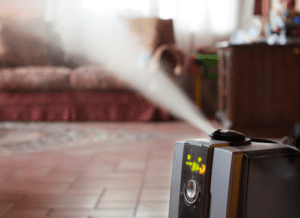Did you know that the air quality inside your house right now is probably worse than it is outside? Unless you live in a city where smog is a common occurrence, there are likely more invisible airborne contaminants floating around inside your bedroom than there are outside in your front yard. It’s called “fresh air” for a reason, after all — but how do you make sure you can say you’re breathing easily indoors, too?
It’s a significant concern, not only for the average homeowner, but also for those with allergies, asthma, and especially young children. Learning about the problems surrounding air purity drives many to immediately consider technological solutions, such as air purifiers for home — especially when you see them advertised on TV. What’s the truth about this technology, though? Are they a worthwhile use of your time, or are they a waste of your money?
It’s Important to Know What Air Purifiers Can Do…
 Understanding the capabilities and limitations of modern air purifiers is an essential first step. So, what are they best at removing from the air? Lab studies show that filter-based air purifiers for home effectively trap dust, dander, pollen, and even smoke particles, keeping these common pollutants from reaching your lungs. While some air purifiers for home can trap mold spores as well, they aren’t effective at addressing the root causes of mold inside a home, such as excessive moisture. It’s also important to remember that efficiency drops in real-world conditions — even the best air purifier won’t be able to match what it could achieve in a carefully controlled testing space. However, for all they can do, purifiers have their limits.
Understanding the capabilities and limitations of modern air purifiers is an essential first step. So, what are they best at removing from the air? Lab studies show that filter-based air purifiers for home effectively trap dust, dander, pollen, and even smoke particles, keeping these common pollutants from reaching your lungs. While some air purifiers for home can trap mold spores as well, they aren’t effective at addressing the root causes of mold inside a home, such as excessive moisture. It’s also important to remember that efficiency drops in real-world conditions — even the best air purifier won’t be able to match what it could achieve in a carefully controlled testing space. However, for all they can do, purifiers have their limits.
… And What They Can’t Do
One of the key limitations to home air purifiers is their inability to trap gases in the air, such as volatile organic compounds, or VOCs. VOCs are typically regarded as one of the more potent problems for air quality, along with naturally occurring gases that can be harmful to health such as radon. Trapping VOCs or radon emissions requires a unique filter medium that absorbs the gas. Most commercially available home air filters aren’t equipped with this type of technology, and thus their functionality focuses primarily on removing dust and debris from the air.
Not all air purifiers can do even that, however. For example, so-called ionizing air purifiers for home also trend more towards “gimmick” and less towards a useful tool for your home. Often billed as a “silent” alternative to traditional air purifiers, ionizers use an electric charge to attract oppositely charged dust particles and dander from the air. That’s the idea, anyway — studies show that they aren’t all that effective at cleaning the air inside the home. Their filters, if they use one at all, tend not to trap dust securely. They also often clean a minimal volume of air relative to the size of the room, meaning most of the particles remain where they were. That’s not to mention that some ion purifiers can indeed produce harmful ozone. So what kinds of air purifiers are effective?
Go HEPA or Go Home
If you’re especially sensitive to allergens and need a way to ensure your air is cleaner, the best option is to choose a filter-based purifier that uses a HEPA filter. HEPA stands for “high-efficiency particular air” filter, and it means that it is very effective at trapping tiny unseen particles. There are different levels of HEPA filtration, with the most advanced modern filters achieving a 99.9% particulate reduction. These, however, are very expensive — and that is one of the primary drawbacks to using filters. For the average person, the benefits might not outweigh the costs of replacing a pricey HEPA filter every one to three months. If you do choose to use a purifier, however, HEPA filtration is tough to beat, especially in comparison to ionizer units.
Not All Air Purifiers for the Home Are Worth Your Time
Watch out for gimmicks. With increasing concern about air quality, there are some products on the market which are undeniably not worth your money. Watch out for the signs that say something is shady about the deal, such as expensive proprietary filters or “too good to be true” claims about efficiency. When in doubt, do your research — most commercial air purifiers have undergone extensive testing by neutral third parties.
There Are Other Options for Clean Air at Home
Unless you have allergies or other sensitivities, an air purifier is likely not to be a gadget that should go at the top of your wish list. Instead, you could take other steps to keep the air clean in your home, from frequently cleaning your floors to keeping your HVAC vents clean. Periodic air duct cleaning is a good idea, too. Contact a trusted HVAC provider in your area to learn more about how cleaning your ducts every few years helps to reduce airborne contaminants throughout the home.

